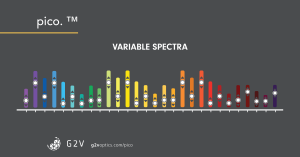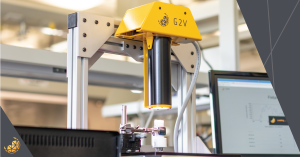Edmonton, Alberta Mar 13, 2019 (Issuewire.com) - Canadian tech company to demo the world’s first upgradeable solar simulator
G2V Optics will present their latest version of the “pico” solar simulator at the American Chemical Society meeting this month.
EDMONTON (March 12, 2019)-G2V Optics is set to showcase their software-controlled LED solar simulator to over 14,000 experts at the American Chemical Society (ACS) meeting in Orlando, Florida, from March 31st to April 2nd.
“I am thrilled to go to the ACS meeting and present the pico with its new features and higher-level precision. It has been really well received so far,” said Ryan Tucker, the company’s CEO.
The pico, a class AAA solar simulator, includes preset AM1.5G and AM0 to AM10 spectra for 0 to 1.1 suns intensity. As the world’s only upgradeable solar simulator, the pico can be customized to specific spectral, intensity, and environmental conditions.
The device was initially developed at the University of Alberta and NRC’s National Institute of Nanotechnology (NINT) by Michael Taschuk. Taschuk then founded G2V Optics and was later joined by current CEO Ryan Tucker.
This academic origin allowed G2V Optics to sell the pico to a variety of university researchers.
“That really helped push forwards the requirements we needed to develop for true research and commercial applications,” said Tucker.
Taschuk said the pico has four main advantages over other solar simulators.
Firstly, because it is a LED simulator, users can adjust the spectra, while most other devices offer only one spectrum. Additionally, the pico can be easily programmed to simulate different times, seasons, and geographical locations with its One-Click Sun™ software.
The second advantage is its extended lifetime and ease of use since the device can be run for months at a time and has no moving parts. It also doesn’t require bulb changes, warm-up time, or calibration, making it an easy and reliable device to use in the field.
Thirdly, the pico can be immersed in the solution, providing flexibility for scientists performing electrochemical experiments.
Lastly, the pico’s modularity allows users to tailor the device to their needs, including near-infrared and ultraviolet light modules as well as customized spectra, intensity and area.
Other modules include the IV module, which can measure the performance of solar cells and generate a characterization report showing all electrical characteristics with curve fitting for error analysis.
“Because both the light and current-voltage characterization are integrated into the pico, scientists can test a wide set of conditions and expose some of the fundamental physical mechanisms that determine the performance of their devices,” said Taschuk.
“The pico is mostly used by academics at the moment, but there is a growing trend for the industry to use this kind of technology, so we’re building bigger versions as well,” added Taschuk.
Although the pico has strong roots in Canada, G2V Optics is now ready to showcase their product to the world’s most ambitious and talented experts.
“The ACS meeting is really at the cutting edge of a whole bunch of industries, from photovoltaics to catalysis to nanomaterials, so we can meet people who are doing the most exciting work and who can benefit the most from our product, and that will be really exciting,” said Taschuk.
Media Contact:
Ryan Tucker
CEO
1-877-428-0428
6801 104 St NW
Edmonton, AB Canada T6H 2L5
Media Contact
G2V Optics Inc *****@g2voptics.com 1-877-428-0428 6801 104 St NW https://g2voptics.com/










